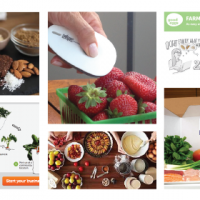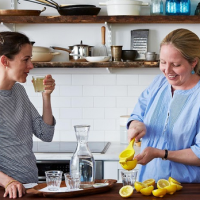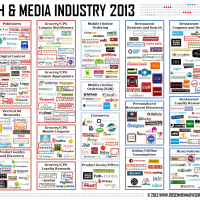
Left to Right: Danielle Gould of Food+Tech Connect, Joanne Wilson, angel investor, Amanda Hesser of Food52 and Stacey Rivera of Bon Appétit. Photo Credit: Ryan Healey
The Internet has turned traditional food publishing on its head. Gone are the days of pure print and ad-supported media business models in traditional food publishing. Long-standing publications are going digital, forcing them to radically change their business models. A new generation of startups, hungry to create more engaging and interactive experiences, are experimenting with new ways to bring home the bacon.
Food+Tech Connect teamed up with Momofuku’s 56th Street Round Table to present Food Media Re-imagined: E-commerce & Digital Strategies. Moderated by Food+Tech Connect’s Danielle Gould, the panel included Joanne Wilson, angel investor and author of Gotham Gal, Amanda Hesser, co-founder of Food52 and Stacey Rivera, managing editor at Bon Appétit.
Coming from three distinctive positions in the food media world, the panelists shared what the most significant changes they’ve seen or experienced in the food media industry over the last 5 years. Wilson pointed to increased social media adoption as a catalyst for brands to create more engaging, innovative content. Rivera named new workflow models and the proliferation of content and social platforms as the most significant changes she’s experienced. With content spread across so many platforms, “we are enabled to streamline content, rather than simply managing it,” branching out to a food-focused lifestyle brand, she said. Hesser noted the “explosion of talent in the food field,” which makes Food52 possible. She added that engaged users are increasingly searching for curated, lifestyle-focused food information hubs rather than a “mosh pit of content.” All agreed that cultural shifts around food–like celebrity chefs, food artisans and DIY– have changed the conversation, creating diversified content, advertising and alternate revenue opportunities.
The discussion also explored how Bon Appetit and Food52 are addressing this changing ecosystem. Rivera noted that Bon Appetit has differentiated itself by creating lifestyle-content, which has helped it double its web traffic and bring in new luxury advertisers like Saks Fifth Avenue. She also explained that given the number of social platforms out there, they have to be very conscious about “spending (time and resources) on all of our platforms in relationship to our respective reach.”
Hesser described Food52 as rooted in continuous curation and uncompromising brand integrity. This notion has also shaped the business model, which started with an ad network, then partnerships and now e-commerce. This August, Food52 is launching Provisions, a purchasing platform for kitchen and home products. Hesser made it clear that she’s not jumping on the e-commerce bandwagon just for the sake of marrying content with commerce. She sees Provisions as a community-driven natural next step for Food52. “We saw it as a unique opportunity to help small makers reach larger audiences,” she said. Additionally, Food52 invited their hungry community to crowdsource the initial product selections for Provisions. According to Hesser, “people’s identities and how they eat are so tied together these days. The consumer desire is huge for an e-commerce component.” As for the business model, Hesser says that she expects their revenue to be equally split between advertising and e-commerce.
As an investor in media companies like Curbed and Daily Worth, Joanne Wilson decided to invest in food media startups such as Food52 because she sees the over-arching potential of the space and believes people are ultimately searching for a “one stop shop for their entire food lifestyle and personal brand.” Though Wilson has been somewhat skeptical whether companies in the space can deliver similar returns as in other verticals, she believes there is “tremendous potential for M&A in the next 5 years which will yield new food media umbrella companies.” In the current climate, she says, there are a lot of redundancies, companies trying to one-up each other with almost indiscernible offerings. As the space grows and more investment comes in, she believes the rampant competition will wane and truly innovative concepts will be acquired and bundled with other cutting edge concepts.
Gould closed out the conversation addressing the audience of eager entrepreneurs, “right now tech people don’t get food and food people don’t really get tech. Startups need to find patient investors in this space who believe in their long-run potential.” What exactly the future of food tech will look like is hard to say. But it’s clear that prominent food publications, eager startups and savvy investors are unified in bridging that divide and creating a limitless future for food media.





